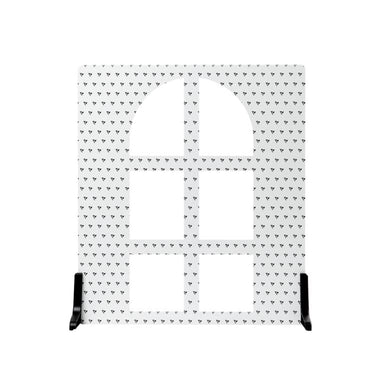Shooting Architecture and Interiors with V-Flats | Article

Roughly five years ago I made the transition from shooting weddings and portraits to shooting architecture and interiors. When making a transition like this, I quickly realized I had a lot to learn. It was as if I was learning my profession from the beginning and starting all over again. Composition was different, lighting was different, post-production was different. It was rough on the bank account as the tools I needed were different. There were the obvious basics: tilt-shift lenses, geared tripod heads, etc. as well as all the small things I didn’t realize I would need, or wanted to try and see if I needed.
On my shoots, I use a combination of natural light and flash. Client’s needs, the look of the space, colors in the room, layout of furniture and walls will all play a factor in the technique I use. Nowadays, even if a client is looking for a very natural look, I typically use flash in some way, to help enhance the image, avoid some color casts and sharpen details. Bouncing light has been my go-to technique since starting. I began by shooting real estate photography, and it was fairly easy because 80-85% of the time, I was coming across white ceilings to bounce light off. As I started shooting bigger homes, then bigger commercial spaces and architecture, despite purchasing more powerful lights, it became more challenging to achieve the proper lighting balance. Lack of white walls, or walls being 20-30 feet away from my subject brought a lot of issues.
Back in March of 2018, we had Aaron Kraft as a guest interview on our Shooting Spaces podcast. Aaron is an architectural photographer based out of Jackson Hole, WY. When speaking with Aaron, he told me of his use of v-flats when shooting interior and architectural photography. For me, that was an “aha” moment. I never thought of using v-flats for the type of work I was doing, but it definitely intrigued me. I thought this could potentially be the perfect solution for these challenges I began facing, now that I was shooting bigger spaces. It would also give me that soft, bounced light I liked, in an effort to try and keep my images looking natural and not so “flashy.”
Being an interior photographer, I am always shooting on location, and this presented a major problem for me looking to try and use v-flats on my shoots. I asked Aaron about it and he told me he made his own portable v-flats. I immediately put building my own v-flat on my list of things to do when I had spare time. We all know how that goes and it never happened.
Luckily, this year at PhotoPlus in New York, while doing some networking for the podcast, I ran across V-Flat World. After reviewing their product, I was hoping this was the perfect solution that I was looking for considering I never had a chance to build one on my own. I decided to pick one up and was excited about the opportunity to use it.
Coincidentally, about a week later, I got an email from Gucci asking me if I would shoot their new store re-opening on Long Island, which had just gone through a major renovation. They sent me some sample images from previous store shoots which they liked, and all the images had a Lightroom HDR/Photomatix quality to them. I figured if natural light was what they were looking for, I would give them that look, but much better.
Being that the lighting in the store was so important to them, it was essential that my images portrayed a very natural feel. I knew this was the perfect shoot to try out my new portable v-flat. The store was filled with amazing details and colors so, I needed to utilize a flash to get the colors a bit more accurate and details a bit sharper. For each image, I shot multiple exposures, using natural light, to expose for different parts of the image where there were differences in the light. When I was sure I got each section of the image shot properly using natural light, I shot a few images (depending on the size and shape of the individual room) with my flash (I use Flashpoint XPLOR 600’s) bounced into the v-flat, to give a nice soft all around light.
For post-production, I composited all my natural light exposures to make sure everything throughout the frame was exposed properly. I then took my flash shots, and masked in some areas of the image to get a more detail in the actual products and make sure it helped remove any major color casts. The quality of the light I got out of the bounced flash into the v-flat was perfect. It had a nice spread and just enough shadow to leave it looking natural.
This was an incredible first experience with the portable v-flat. The portability makes it an incredible solution for an on-location photographer. Additionally, the price makes it extremely hard for someone to justify building it on their own. I am very pleased with the images and the client loved them. They already booked me for another shoot, and I can’t wait to bring it out again for them.

















1 comment
Easier than using soft-boxes in the interiors. Quality of light is seamless, enhances the look without a flashy look.
Stan
Leave a comment
This site is protected by hCaptcha and the hCaptcha Privacy Policy and Terms of Service apply.